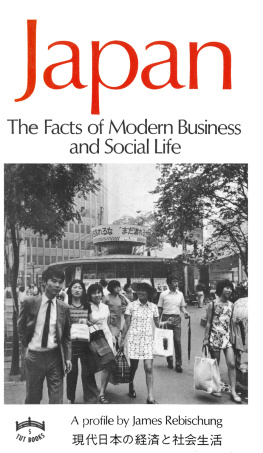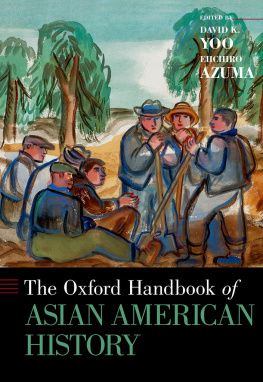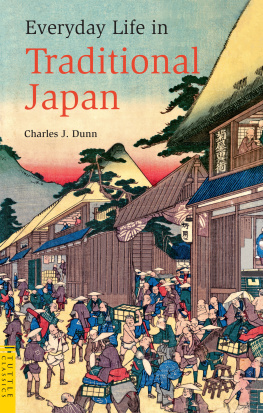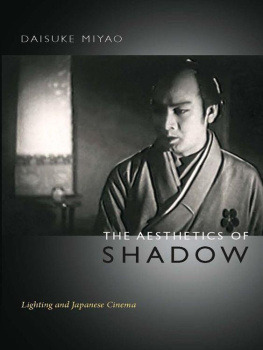James A. B. Scherer - Japan To-day
Here you can read online James A. B. Scherer - Japan To-day full text of the book (entire story) in english for free. Download pdf and epub, get meaning, cover and reviews about this ebook. year: 2015, publisher: Routledge, genre: Art. Description of the work, (preface) as well as reviews are available. Best literature library LitArk.com created for fans of good reading and offers a wide selection of genres:
Romance novel
Science fiction
Adventure
Detective
Science
History
Home and family
Prose
Art
Politics
Computer
Non-fiction
Religion
Business
Children
Humor
Choose a favorite category and find really read worthwhile books. Enjoy immersion in the world of imagination, feel the emotions of the characters or learn something new for yourself, make an fascinating discovery.

- Book:Japan To-day
- Author:
- Publisher:Routledge
- Genre:
- Year:2015
- Rating:3 / 5
- Favourites:Add to favourites
- Your mark:
- 60
- 1
- 2
- 3
- 4
- 5
Japan To-day: summary, description and annotation
We offer to read an annotation, description, summary or preface (depends on what the author of the book "Japan To-day" wrote himself). If you haven't found the necessary information about the book — write in the comments, we will try to find it.
This book, first published in 1904, aimed to provide an overview of the aspects of everyday Japanese life at the beginning of the twentieth century. This book will be of interest to students of history and Asian Studies.
Japan To-day — read online for free the complete book (whole text) full work
Below is the text of the book, divided by pages. System saving the place of the last page read, allows you to conveniently read the book "Japan To-day" online for free, without having to search again every time where you left off. Put a bookmark, and you can go to the page where you finished reading at any time.
Font size:
Interval:
Bookmark:


2 Park Square, Milton Park, Abingdon, Oxon, OX14 4RN
711 Third Avenue, New York, NY 10017
The publisher has gone to great lengths to ensure the quality of this reprint but points out that some imperfections in the original copies may be apparent.
The publisher has made every effort to trace copyright holders and welcomes correspondence from those they have been unable to contact.
ISBN 13: 978-1-315-69175-6 (ebk)

From a drawing by a native artist

| The Hermit becomes a HeroThe Educational Progress of JapanThe Military Progress of Japan and a Comparison with RussiaA View of Japan To-Day. |
| The Name of JapanSunrise means Beauty: The Beauty of Kamakura, Enshima, NikkSunrise means Mystery: Earthquakes, Tidal Waves, and VolcanoesSunrise means Light: Civilization and Christianity; or, Manners versus Morals. |
| Tky in the RainA Jinrikisha RambleThe Wheelman's ParadiseBishop Potter at Nagasaki. |
| In a Japanese HomeThe ChildrenFestivals and MythsThe WomenChristian Wedlock, so-called. |
| What it is NotHonorificsChinese ComplicationsThe Blunders of BeginnersWhy I Study English. |
| The Buddhist at ChurchA Sermon on the Chief End of ManTales from Japanese Folk-LoreA Specimen of Oriental HumorReligions Old and New. |
| The Island of KyshA Calm Succeeded by a StormThe Land of the Unknown FireA Sketch of SagaLife in a Japanese SchoolSide-Lights on Demoniacal Possession. |
| The Aborigines of JapanAinu CharacteristicsKing PenriStrenuous PastimesThe Spiritual Traditions of a Primitive People. |
| Topsy-TurvydomNegative Traits: The Contempt for Time, the Absence of Nerves, Want of Sympathy, and Lack of ConfidencePositive Traits: Frugality, Politeness, and IndustryThe Japanese and Chinese contrasted. |
| The Personality of G. F. VerbeckHis Life Story the History of Modern JapanThe Need for Men to Succeed Him. |
| Palestine and Japan: The Circuit of the HeavensThe Vast Importance of Asia and the Present Problem of ChinaRussia versus Japan: The Political Argument for MissionsReasons why Japan may Win this War. |
| Japan To-Day |
| A Walking Conservatory |
The Cynosure
THE CYNOSURE
Font size:
Interval:
Bookmark:
Similar books «Japan To-day»
Look at similar books to Japan To-day. We have selected literature similar in name and meaning in the hope of providing readers with more options to find new, interesting, not yet read works.
Discussion, reviews of the book Japan To-day and just readers' own opinions. Leave your comments, write what you think about the work, its meaning or the main characters. Specify what exactly you liked and what you didn't like, and why you think so.








